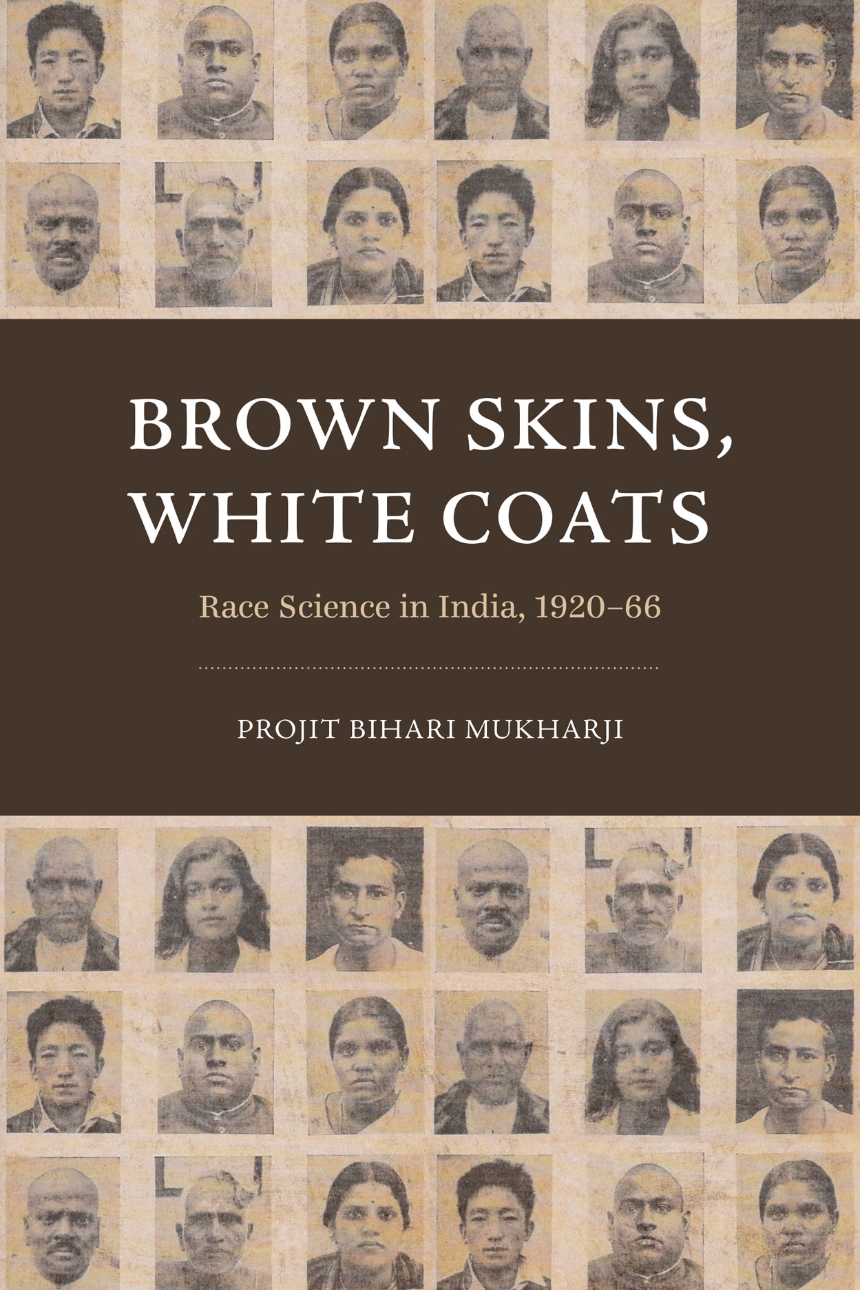Brown Skins, White Coats
Race Science in India, 1920–66
A unique narrative structure brings the history of race science in mid-twentieth-century India to vivid life.
There has been a recent explosion in studies of race science in the twentieth and twenty-first centuries, but most have focused either on Europe or on North America and Australia. In this stirring history, Projit Bihari Mukharji illustrates how India appropriated and repurposed race science to its own ends and argues that these appropriations need to be understood within the national and regional contexts of postcolonial nation-making—not merely as footnotes to a Western history of “normal science.”
The book comprises seven factual chapters operating at distinct levels—conceptual, practical, and cosmological—and eight fictive interchapters, a series of epistolary exchanges between the Bengali author Hemendrakumar Ray (1888–1963) and the protagonist of his dystopian science fiction novel about race, race science, racial improvement, and dehumanization. In this way, Mukharji fills out the historical moment in which the factual narrative unfolded, vividly revealing its moral, affective, political, and intellectual fissures.
There has been a recent explosion in studies of race science in the twentieth and twenty-first centuries, but most have focused either on Europe or on North America and Australia. In this stirring history, Projit Bihari Mukharji illustrates how India appropriated and repurposed race science to its own ends and argues that these appropriations need to be understood within the national and regional contexts of postcolonial nation-making—not merely as footnotes to a Western history of “normal science.”
The book comprises seven factual chapters operating at distinct levels—conceptual, practical, and cosmological—and eight fictive interchapters, a series of epistolary exchanges between the Bengali author Hemendrakumar Ray (1888–1963) and the protagonist of his dystopian science fiction novel about race, race science, racial improvement, and dehumanization. In this way, Mukharji fills out the historical moment in which the factual narrative unfolded, vividly revealing its moral, affective, political, and intellectual fissures.
Reviews
Table of Contents
Contents
List of Illustrations
Parable of Brownness
An Advertisement for White Coats
Acknowledgments
Introduction
Interchapter: Letter 1
1: Seroanthropological Races
Interchapter: Letter 2
2: Mendelizing Religion
Interchapter: Letter 3
3: A Taste for Race
Interchapter: Letter 4
4: Medicalizing Race
Interchapter: Letter 5
5: Blood Multiple
Interchapter: Letter 6
6: Refusing Race
Interchapter: Letter 7
7: Racing the Future
Interchapter: Letter 8
Conclusion
Notes
Sources for Interchapters
Bibliography
Index
List of Illustrations
Parable of Brownness
An Advertisement for White Coats
Acknowledgments
Introduction
Interchapter: Letter 1
1: Seroanthropological Races
Interchapter: Letter 2
2: Mendelizing Religion
Interchapter: Letter 3
3: A Taste for Race
Interchapter: Letter 4
4: Medicalizing Race
Interchapter: Letter 5
5: Blood Multiple
Interchapter: Letter 6
6: Refusing Race
Interchapter: Letter 7
7: Racing the Future
Interchapter: Letter 8
Conclusion
Notes
Sources for Interchapters
Bibliography
Index
Awards
Modern Language Association: MLA Scaglione Prize for South Asian Studies
Honorable Mention
History of Science Society: Pfizer Award
Won
British Society for the History of Science: Pickstone Prize
Shortlist
